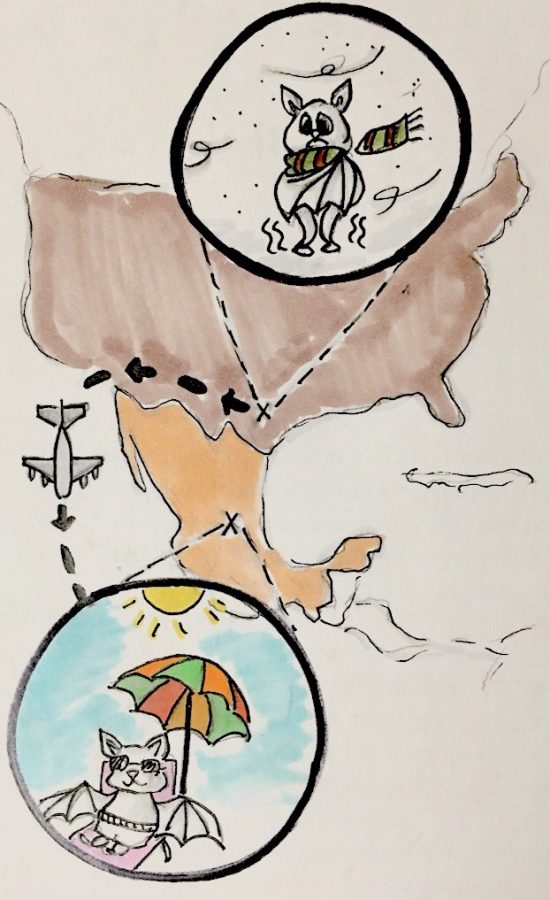From late February to October, Austin natives and tourists alike flock to Lady Bird Lake to see 1.5 million bats emerge from under the Congress Avenue Bridge. As temperatures drop, fewer bats emerge nightly, and the bridges that once housed these creatures are left almost entirely empty. But where do they go?
“I think that the bats migrate south for the winter,” said Amy Ouyang, public health freshman. “They follow the birds?”
BATX, a student-run organization centered around the preservation and conservation of Austin’s bats, was created to answer that exact question. Led by linguistics senior Jenni Tucker, the group educates students about the local critters’ ecological benefits and migration patterns.
“Texas has around 33 species of bats, and we have roughly 10 or so species in this area,” Tucker said. “The Mexican free-tailed bats that live under the bridge migrate to Mexico for the winter where they breed and then return here to finish out their pregnancies, give birth and raise their young.”
Tucker said the bats return as early as February and throughout the spring. Merlin D. Tuttle, bat conservationist and founder of Bat Conservation International, explained the returning voyage of the free-tails to Austin.
“Just before their northward migration, they mate,” Tuttle said. “By summer, male and female free-tails will have divided into bachelor and nursery colonies.”
Once the free-tails have reached Austin, the underbelly of the Congress bridge is entirely occupied by female bats and the young pups they’ll soon give birth to. Male bats will roost in nearby spots around the city, gathering in smaller and more scattered collections. While it is believed that the females return to the Congress bridge every year, researchers cannot be certain as to whether males return to the same spots around town.
“Even among populations that migrate, not all bats leave,” Tuttle said. “Despite the fact that free-tails cannot adapt to cold weather, some choose to stay behind, and the reason for this is unclear.”
Regardless of whether they’re migrating north or south, Tucker said the bats act as a great aid to South Texas farms during their migrations.
These bats have proven to be a valuable resource for much of Texas, Texas farmers and Congress Avenue Bridge spectators alike.
“In general, bats fulfill a similar function in the ecosystem as birds do: insect population control, spreading of seeds, pollination, et cetera,” Tucker said. “Mexican free-tailed bats save cotton farmers in South-Central Texas $700,000 a year in crop damages and pesticide spending.”
If seeing the bats in person is not enough, Austin Bat Refuge provides a year-round bat activity radar to satisfy bat enthusiasts. It includes videos from night to night, detailing free-tailed bats’ summer activity all the way to their departure for migration at the end of November.















